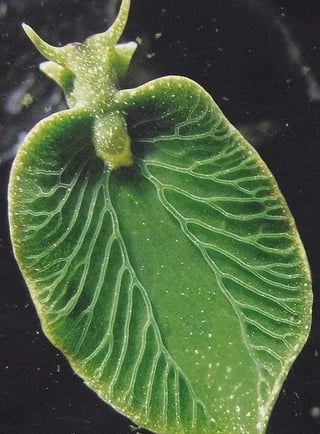Elysia Chlorotica: Nature's Photosynthetic Sea Slug


Introduction to Elysia Chlorotica
Elysia chlorotica, commonly known as the Eastern Emerald Elysia or the Eastern Emerald Sea Slug, is a remarkable species of sea slug that belongs to the family Elysiidae. This unique organism is primarily found in the coastal waters of North America, from Nova Scotia to Florida, where it lives among seagrass beds and algae. Fascinatingly, Elysia chlorotica is one of the few known animals capable of photosynthesis, a process typically associated with plants. This ability allows them to synthesize food using sunlight, a characteristic that has captivated scientists and nature enthusiasts alike.
Photosynthesis in Elysia Chlorotica
The ability of Elysia chlorotica to perform photosynthesis stems from its symbiotic relationship with the algal cells it consumes. After ingesting these cells, the slug incorporates the chloroplasts from them into its own cells in a process known as kleptoplasty. This remarkable biological adaptation allows Elysia chlorotica to utilize sunlight to convert carbon dioxide and water into sugars and oxygen, much like plants do. This not only provides the sea slug with a primary food source but also enhances its survival in nutrient-poor environments.
The Ecological Importance of Elysia Chlorotica
The ecological significance of Elysia chlorotica extends beyond its unique feeding strategy. As a photosynthetic organism, it contributes to the primary productivity of its habitat, supporting various marine ecosystems. By absorbing sunlight and converting it into energy, Elysia chlorotica plays a role in the aquatic food web, offering sustenance to predators that feed on it. Furthermore, as a bioindicator species, its health can reflect the overall condition of the marine ecosystem, signaling changes in environmental quality and biodiversity.
Moreover, research on Elysia chlorotica can offer insights into metabolic processes and the evolution of photosynthesis in marine organisms. Its remarkable adaptations challenge our understanding of energy acquisition and may have applications in biotechnology, such as developing sustainable energy sources or improving agricultural practices.
Conclusion
In summary, Elysia chlorotica is an extraordinary sea slug that showcases the wonders of evolution and adaptation in the natural world. Its ability to photosynthesize food not only highlights the complexities of marine life but also emphasizes the importance of preserving the delicate ecosystems in which these creatures thrive. As we continue to study Elysia chlorotica and other unique species, we expand our understanding of biodiversity and our relationship with the environment.
